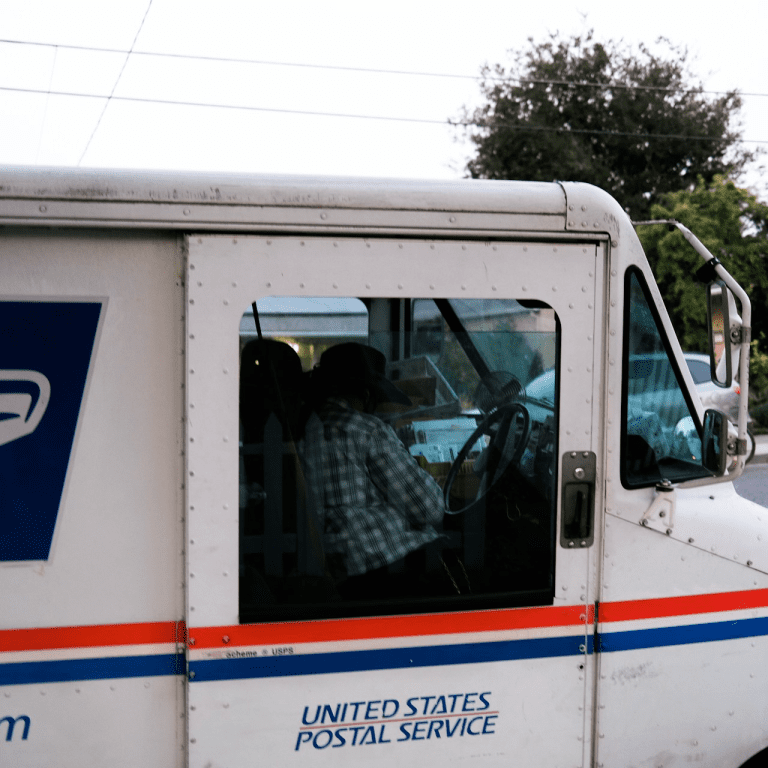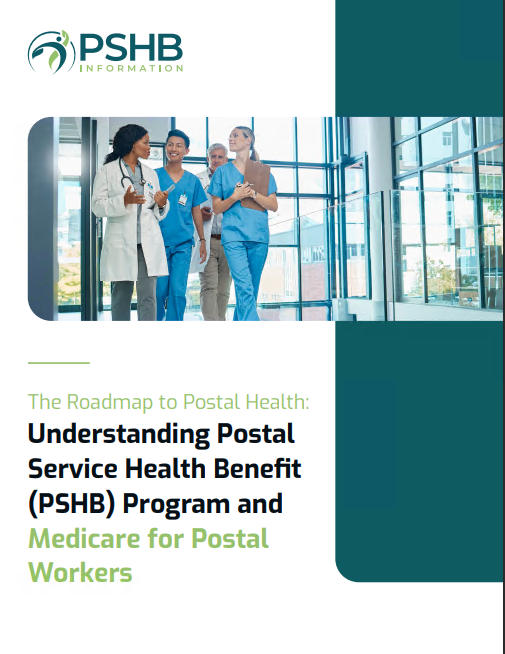Key Takeaways
-
Medicare and the Postal Service Health Benefits (PSHB) Program can complement each other in 2025, but the coordination rules can be confusing if you’re not prepared.
-
Whether you’re still working or already retired, the way Medicare and PSHB work together depends on your age, enrollment status, and timing.
Not All Roads Lead to the Same Outcome
If you’re part of the Postal Service—whether still on the job or already retired—you probably know that health coverage is shifting in 2025 with the new PSHB Program. What’s not so obvious is how it plays along with Medicare, especially Part B. You might think enrolling in Medicare automatically improves your PSHB coverage, but it’s not always that simple. There are some twists and turns along the way.
Let’s unpack how PSHB and Medicare work together—and how to avoid costly missteps.
Who Needs to Enroll in Medicare?
Starting in 2025, many Postal retirees must enroll in Medicare Part B to keep their PSHB coverage. But there are exceptions.
Here’s when you’re required to enroll in Medicare Part B:
-
You retire after January 1, 2025, and you’re eligible for Medicare.
-
You’re a family member of a Medicare-eligible annuitant who retired after that date.
You’re exempt from the Medicare Part B requirement if:
-
You retired on or before January 1, 2025.
-
You’re not yet Medicare-eligible.
-
You qualify for an exception due to age (64 or older as of January 1, 2025) or other specific conditions.
So the timing of your retirement makes a big difference. If you’re right on the edge of eligibility, it’s worth double-checking what group you fall into.
What Medicare Adds to the Table
When you enroll in both PSHB and Medicare, your benefits often expand. Medicare becomes your primary payer, and PSHB shifts to secondary, which usually means:
-
Lower out-of-pocket costs (thanks to Medicare’s cost-sharing)
-
Reduced deductibles in some PSHB plans
-
No need for referrals to see specialists in most cases
-
Automatic drug coverage through a Medicare Part D plan tied to your PSHB plan
That all sounds great, right? But there are still some things you should watch for.
It Doesn’t Always Work the Way You Think
PSHB and Medicare don’t always blend seamlessly. Some quirks in how they coordinate can catch you off guard.
Example Scenarios:
-
If you skip Medicare Part B when required, your PSHB coverage can be suspended—or terminated.
-
If you’re still working past age 65, Medicare may not be the primary payer, which could affect cost-sharing.
-
If you enroll late in Medicare, you might owe lifetime penalties on your Part B premiums.
Bottom line: coordination rules depend on whether you’re working, retired, or transitioning between the two.
Working Beyond 65? Here’s What Changes
If you’re still employed by USPS at age 65 or older, you don’t have to sign up for Medicare Part B right away. Here’s how it works in 2025:
-
Your PSHB plan stays primary.
-
Medicare Part A (hospital coverage) becomes secondary if you’ve enrolled in it.
-
You can delay Part B without penalty—as long as you sign up within 8 months of leaving your job.
That delay can be a money-saver in the short term, but once you retire, the clock starts ticking. Waiting too long after retirement could result in late penalties or lapses in coverage.
Prescription Drug Coverage in 2025
All Medicare-eligible retirees enrolled in PSHB automatically get drug coverage through a Part D Employer Group Waiver Plan (EGWP). That’s a mouthful, but what it means is:
-
You don’t need to enroll in a separate Medicare Part D plan.
-
You get creditable drug coverage through your PSHB plan.
-
Your pharmacy benefits work in coordination with Medicare.
This built-in integration helps avoid gaps in your prescriptions and keeps costs predictable.
What About Out-of-Pocket Costs?
Good question—because even with Medicare and PSHB, you’re not totally off the hook.
Here’s a rough idea of the cost layout in 2025:
-
Medicare Part B comes with a monthly premium (standard is $185).
-
Part B deductible is $257.
-
PSHB plans may reduce your copayments or deductibles if you’re enrolled in both.
-
Some plans waive cost-sharing altogether when Medicare is primary.
So while your overall costs can go down, they won’t disappear entirely. You’ll want to compare your PSHB options to see which plans offer better coordination benefits.
Timeline to Watch: Open Season
You’ll get the chance to review and update your PSHB coverage every year during Open Season, which runs from November to December. That’s your window to:
-
Switch PSHB plans
-
Confirm Medicare enrollment status
-
Adjust your family coverage
Don’t skip it—especially if your situation changes, like turning 65 or retiring soon.
Coverage for Your Spouse and Family
Medicare coordination doesn’t just affect you—it impacts your family too.
-
If your spouse is Medicare-eligible, the same Part B requirements apply if they’re covered under your PSHB plan.
-
If your spouse or dependent isn’t eligible for Medicare, PSHB stays primary for them.
-
You can keep your PSHB family coverage even if your spouse isn’t on Medicare yet, but costs and coordination will differ.
That’s why it’s important to plan as a household when reviewing your coverage.
Choosing the Right PSHB Plan
Not all PSHB plans coordinate equally with Medicare. Some plans:
-
Offer lower premiums for those enrolled in both Part B and PSHB
-
Waive deductibles and copayments if Medicare is primary
-
Provide extra wellness benefits or reduced costs for specific services
Other plans may offer little to no savings just for being enrolled in Medicare. So if you’re making decisions during Open Season, don’t just stick with what you’ve always had—compare your options based on your Medicare enrollment.
Retiring in 2025? Here’s What You Need to Do
If you’re planning to retire this year, your transition to Medicare and PSHB will look like this:
-
Enroll in Medicare Part A and Part B once you’re eligible.
-
Coordinate your PSHB plan to work alongside Medicare.
-
Review your Open Season options to choose the best PSHB plan.
-
Double-check deadlines so you don’t get hit with a late enrollment penalty.
Even if retirement is months away, getting a jump start on these steps can help you avoid coverage gaps.
Your Coverage After Retirement
Once retired and enrolled in Medicare, your experience with PSHB changes:
-
Medicare pays first.
-
PSHB supplements the gaps.
-
Your total out-of-pocket costs typically go down.
However, you’ll still need to keep paying:
-
Your Medicare Part B premium
-
Your PSHB plan premium (based on Self Only, Self Plus One, or Family tier)
These premiums are separate, and you’ll want to budget for both.
Timing Matters More Than You Think
A lot of this comes down to timing. In 2025, your enrollment date in Medicare, your retirement date, and your participation in Open Season all play a role in:
-
What you’re eligible for
-
What you’ll pay
-
How your coverage actually works
Whether you’re turning 65, retiring, or just planning ahead, staying proactive is your best move.
What to Expect Going Forward
PSHB and Medicare are here to stay—and they’re becoming more connected each year. But the responsibility is still on you to:
-
Know the deadlines
-
Understand the coordination rules
-
Compare plans based on your own needs (and those of your family)
Getting the mix wrong could mean higher costs, missed benefits, or canceled coverage. But getting it right means smoother claims, fewer bills, and better peace of mind.
Make the Most of Your Coverage
In 2025, Medicare and PSHB can absolutely work in your favor—but only if you understand the rules and take timely action. Whether you’re about to retire or just want to optimize your benefits, there’s a lot to consider.
For a personalized review of your options and to ensure you’re making the right moves, reach out to a licensed agent listed on this website for expert help.








